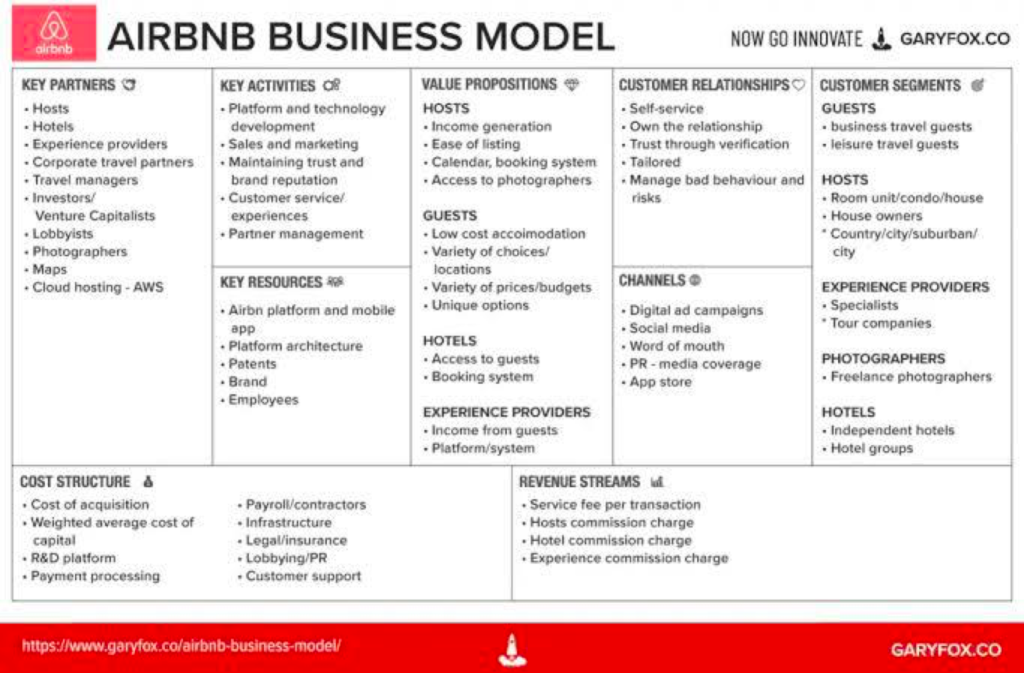Table of Contents
Always have a goal because it gives meaning…
…because vision is everything
…and persistence makes all the difference
Know The Direction You Are Headed
As humans, we fill our lives with goals. Every goal is our way of accomplishing a certain task. The same applies to business and with far greater impact. The difference is that we’re not just dealing with work processes, but with other professionals who invest their time in their respective goals.
The significance of having a business goal is that you gain a sense of direction and a set timeframe to accomplish your objectives. Goals help you focus your time and energy to work collectively with a team and to achieve the impossible.
Business goals vary in scope and complexity, ranging between an entire organization and a department to an employee level.
Setting Business Goals Matters For The Following Reasons:
- Guiding decisions
- Prioritizing one work task from another
- Identifying teams to appoint to accomplish the set goal
- Improving collaboration with diverse sets of teams
- Motivating and giving each team a sense of direction
Therefore, make your goals straightforward and reasonably achievable.
To understand whether you are reaching your goal’s destination on a path that is more practical, you need to ensure the goal is – DESCRIPTIVE – REALISTIC – MEASURABLE.
Make Your Goal DESCRIPTIVE
Have you laid out the complete plan and points of execution for each objective that will take you to your goal?
A goal needs to be descriptive, for instance, you want to start a bakery business. This bakery shop is your dream. Selling baked goods made from bread and other types of wheat flour is what you aspire to do. Your goal, therefore, is to earn the necessary savings it will take to buy a location or rent one for a bakery shop.
The rest of your objectives will fall through, as such:
- Find the right location based on the city you wish to open up the bakery shop.
- Give a certain theme and look to your bakery shop to attract customers.
- Find vendors who can sell baked items every month.
- Find trustworthy staff to work for you.
- Set up a website to increase online traffic and in turn increase footfall.
- Arrange for a loan that can cover the first year of payments and necessary investments for opening the shop.
The list above is not exhaustive. There’s so much that goes into planning and execution. You’ll have financial advisors who can guide you about what it means to own and operate a bakery shop.
This is where being practical about your dreams and goals becomes crucial, which takes us to the next part.
Make Your Goal REALISTIC
Sometimes, we become way too ambitious for our own good! How would one know where to draw the line?
Firstly, what does it mean to become overly ambitious?

It is perfectly alright to have dreams and goals where the sky is the limit. At the same, it is important to note the limitations we, ourselves have at hand and to overcome those limitations.
For instance, let’s go back to the bakery shop, as an example – your dream is to open a shop that has three floors. Each floor will have a defined set of goods different from one another. That way, you have your very own mini bakery mall.
As exciting as this dream might seem, one should consider the large investment for one floor, which is not already less. A more practical or realistic approach would be to first take one floor at first and over time, build up new floors. However, if your brand theme suggests three floors from the beginning, then your next step is to acquire a business loan that can cover the cost of acquiring or building two more floors. This means that you have to make sure you meet all the requirements that can allow you the sanction of a business loan.
However, ask yourself the question every new business owner avoids at first! What if the business doesn’t run as expected? The build-up of three floors becomes a wasted investment.
That is why at times, we need professional advisors and trusted acquaintances who have been in the same business. The experience they’ve gained from their businesses established will provide you with pearls of wisdom.
It’s not always necessary that professional counseling may be what you need. You may be told that certain expectations are not practical and may even seem foolish at the time. However, putting deep thought into it and figuring out creative ways to achieve your goals is essential.
Have You Tried The Business Model Canvas?
Also, consider working on the popular BUSINESS MODEL CANVAS designed for business owners. The business model canvas has different categories to fill in order to know the nature of what is required to achieve their goals. Here’s how a business model canvas looks:

What each category means:
- Key partners: This includes the partnerships you make to advance your business. Examples are strategic alliances with competitors, buyer-vendor partnerships, joint ventures, etc.
- Key Resources: Deciding the physical, financial, and intellectual assets your company needs.
- Key Activities: The crucial actions you must execute to operate successfully. These activities depend on the business you own. For instance, a bakery shop will have key activities that include installing baking machines, display counters, etc.
- Value proposition: The value you add to your services and products that attract more business aka more customers.
- Customer relationship: Maintaining and enhancing customer relations through regular and efficient customer support, automated and seamless operations, etc.
- Channels: The platforms of communication that you select to interact and reach out to your target customers. Examples – website, social media, retail store.
- Customer segment: Plan a target market with a specific niche of consumers interested in the product or service you are selling.
- Competitive advantage: A unique feature of your product or service that is unique to your brand.
- Cost structure: This accounts for a list of expenses that your business requires to function, and how all expenses affect pricing.
- Revenue streams: Figuring out the multiple ways your company can generate income.
To better understand how you can fill each category with relevant details, let’s consider an example other than that of a bakery shop. Take a look at AIR BNB’s business model canvas.

Make Your Goals MEASURABLE
Setting SMART goals means devising a solid plan and leaving little to chance. That being said, the mnemonic S.M.A.R.T. expands to Specific, Measurable, Achievable, Relevant, and Time-bound.
Let’s explore each section of this measurable format.
- Specific: We mentioned descriptive goals but ones that are simplistic. In other words, make your goals specific with a clear outcome. A specific goal helps you to stay motivated and leaves little chance, of losing focus in the end.
Non-specific goal: I want to start my own business.
Specific goal: I want to start my own business by opening my bakery shop.
- Measurable: Once you’ve set a specific goal, it’s time to set milestones like dates or month-wise targets.
Non-measurable goal: I’m going to start saving for my business.
Measurable goal: Based on the capital I calculated for starting my own business, I’m going to save 20% of my monthly salary for the next six months. After my yearly increment, I will save up to 25% for the next year.
- Achievable: Set goals that are realistic and achievable. Consider a set of objectives that are spaced appropriately and in a timely manner. Imagine a platter that can hold five assorted grilled diced vegetables. Would the platter be able to hold five more types of grilled vegetables? In other words, the below example gives a more realistic explanation.
Non-achievable goal: I will sell a hundred different baked dishes at my shop.
Achievable goal: In the first three months, I will sell close to thirty different baked dishes. Upon reviewing the sale of each dish, I will decide to add, retain, or reduce the number of dishes sold.
- Relevant: Have you analyzed whether the goal you want to achieve is relevant to you? A goal is meaningful when you identify the key benefit.
Non-relevant goal: I want to sell baked goods to make more money. (Yes, everyone wants to make money, but what’s relevant about it?)
Relevant goal: I want to sell innovative baked dishes to personalize my brand for customers, and therefore, increase my sales.
- Time-bound: Create a healthy timeline that will help you move from one task to another seamlessly. There is a vast difference in the way projects are completed when they are timed versus when a timeline is not set in place. Each milestone is achieved with a focused mind and a clear agenda of what is expected.
No set time: I will bake 10 new dishes in one month.
Time-bound goal: It will take three months to perfect one new baking dish.
Types Of Goals That Drive Business Growth
We’ve established the fact that without goals, a team cannot work efficiently. It will just be a bunch of individuals working blindly without a sense of direction.

Let’s explore these four types of goals that organizations could use.
Time-based goals
Do you have long-term or short-term business goals? Shouldn’t you have both?
When running a business, it is essential to set goals that you can achieve over a set time period.
With long-term goals, you can cover the larger-sized milestones.
For instance, you open bakery stores in other parts of the world – expanding your branches.
Another example could be expanding your niche market to corporate events.
On the other hand, short-term goals are clearly defined and precise with consistent expectations. This type of goal includes improving customer relationships, improving baked goods delivery systems, etc.
Effectiveness-based goals
As a business owner, you want your team or company to execute work efficiently. Adding value to the customer’s life is your number one priority. Therefore, making a list of effectiveness-based goals can help set up a defined approach to working.
- Enhance or maintain the quality of product packaging.
- Ensure the quality of the products is consistent in every production batch.
- Maintain the temperature of the storage unit when goods are displayed.

Result- and activity-oriented goals
Be it long-term, short-term or effective-based goals, the results you obtain are based on a set of activities performed. Therefore, there are two interlinked forms of goals that your company can benefit from through a structured manner.
A result-oriented goal is, as the name suggests, the result you wish to achieve. For instance, the result you want to obtain is developing an app for customers to purchase baked goods online.
The activity-oriented goal will define the steps you need to achieve the result.
- Make the framework of how the app will work.
- Coordinate with the app designer and developer.
- Hold periodic meetings on the progress of the app developed.
Quantitative and qualitative goals
Goals can also be divided into quantity and quality. Quantitative goals can determine the measurable value of a certain operation or task performed. For instance, a Google ad campaign run to target local customers helped increase footfall by 30%.
Qualitative goals are defined by the quality the result has to offer. For instance, customers rush into the bakery frequently in December, expecting Christmas-baked delights.
Why Does Your Business Require Promotions?
You wouldn’t have to worry about business promotions if there were no competitors. There will always be a competing brand that will have better offers. That’s why, at Digitalz Pro Media & Technologies, we recognize the speed at which businesses perform and recommend promoting on a strategic level.
Promote your business as you introduce new products, services, discounts, offers, and awards won, among other business activities.
As every business is run on the premise of creating monetary value, the customers do become a major priority. Therefore, acquiring new customers becomes your first goal.
However, what is a business without customers?
Remember that your target audience is a distracted group of people who won’t take long to move on to the competitor.
Therefore, when it comes to setting business goals, one of your primary goals is to market your brand. Your business requires promotions in order to continue growing and operating on profitable levels.
The Stages Of Promoting Your Business
Digitalz Pro Media is offering you expert tips on promoting your business. So, while competitors aim to get their foot in the door, you can allow customers to open the door for you.
Here’s how:
Insert Calls-To-Action In Your Team’s Email
- In the concluding section of your email, a Call-to-Action can encourage your customers to approach you. For instance, we offer free consultation on digital marketing solutions and we make sure to add this to selected call-to-action slots wherever necessary.
Open A Google My Business Account
- Google is a search engine that can help deliver your brand’s products and services to potentially interested customers. Therefore, opening a Google My Business account can turn your brand into a trustworthy and credible brand for customers searching for products and services online. Also, once you open your account, ensure to enter the correct details of your business name, address and phone number. This is so that you don’t miss a call or visit from customers due to wrong information added.

Join Hands With Non-Competitor Businesses
- Set up a joint venture with non-competitors to expose your brand to a wider audience. Collaborate with influencers or bigger corporate companies that can benefit you and vice versus in generating targeted business goals.
Create An Email Marketing Strategy
- Yes, everyone’s inbox is flooded with promotional emails, but emailers still work, even today! You don’t have to always seem promotional as this depends on the email marketing strategy that we will create for you. Through emailers, you can build a strong relationship with customers and develop a robust customer base.
Offer Free Or Discounted Products
- For instance, our free consultation is a valuable offer that we provide to all our customers. We also provide affordable services to promote your brand locally.
Present Your Expertise / Conduct Webinars
- Get out there to provide more value to customers through online presentations and webinars. You can attract an audience that can be your direct or referral customers. Showing yourself as a leader in your field helps generate the trust customers need in order to buy your services.
Promote Your Business At Offline Events
- Yes, today this seems challenging. However, there are a number of ways to still get out there, like online seminars and conferences where you can make your presence known.
Ask For Reviews On Your Products And Services
- When you deliver your brand’s products and services; be sure to ask customers to offer their valuable feedback. Positive reviews definitely help, while negative reviews give you the opportunity to build customer relationships by solving their issues.
Use Facebook Instant Articles
- Facebook instant article publishing is a feature that an organization’s page administrator can use. This feature was developed so that the audience can access your content immediately because well, people don’t wait too long before moving on to the next post. Though these articles do not enable website traffic, your article, however, allows the audience to know more about your brand.
Use Visuals On Social Media
- Imagery is the audience’s preferred way of reading your brand because not everyone likes textual content. In fact, these days, images and videos are what work best. The better the visual quality, the higher the customer engagement. Of course, the quality of content matters too. Therefore, create valuable content and promote it on multiple platforms suitable to your audience.
Apply SEO Activities To Your Efforts
- If you are running a business without investing in organic marketing, you are incurring significant losses. This is because Search Engine Optimisation or SEO helps to gain relevant website traffic through specific keywords that your audience uses to search the products you sell. According to the best SEO agency in Faridabad, “No matter what products or services you sell or how long you’ve been in business, credibility is important. If users trust your brand, they’ll feel more confident buying from you. A strong SEO strategy can also position you as a trustworthy leader in your industry and help you stand out from your competitors.”
Take Part In Exhibitions And Trade Shows
- As traditional as this sounds, exhibitions and trade shows are never out of style. People love connecting with one another and businesses do not hold back on this front. When meeting potential buyers in-person, your chances of gaining valuable business is far higher.
Join A Paid Membership And Take Part In Community Events
- There are paid groups that act as a platform to expose your brand to a specific niche. Community events too help gain brand awareness. However, through paid membership, there is a wider and guaranteed source of gaining customers. Customers know that this platform has business owners that have entered through paid membership, which speaks of their authentic nature to doing ethical business.
Use Google Ads, LinkedIn Ads And Facebook / Instagram Ads
- Lastly, promote your brand online and gain relevant leads – Television and radio ads work too. According to lead generation services in India, “Paid advertising on Google, Facebook, Instagram & LinkedIn are laser-sharp targeted & results are measurable hence can yield relevant leads faster and efficiently, in a short time.”

So, Do You Need Branding, Marketing, Sales, or All?
In knowing the type of goals your business requires will help you decide the direction you are headed. Once this direction is set, your next step is to make sure that you work towards branding, marketing, and sales.

As we conclude this chapter, we want to share a parting gift and give you an overview of how branding, marketing, and sales differ.
They’re all needed at various stages of achieving your business goals, so let’s understand the difference.
Branding
- Branding helps define your business, how you can help your audience, how they can benefit from your business, and why customers should care about your brand.
Marketing
- Marketing involves the activities you perform to promote your business through different platforms of communication. Basically, communicating your brand to the audience!
Sales
- Sales is the method you use to sell your products or services after you’ve successfully managed branding and marketing.
Are you interested to know more about all these three elements of business promotions? We’re going to explore this domain as well. We’re going to move on to the next chapter! Hope you stay tuned to our upcoming chapter where we’ll provide detailed information about branding, marketing, and sales.

Related Blogs
- Why Digital Marketing Is Important For Small Businesses?
- Ten Steps To Create A Robust Digital Marketing Strategy For Your Business
- Digital Transformation: How Technology Is Revolutionizing Marketing
- Transform Your Brand’s Image With These Digital Marketing Trends In 2023
- 10 Digital Marketing Strategies For B2B Businesses
- Everything You Need To Know About Creating A Business Profile That Generates Leads.
- Generate Leads Through Paid Marketing Techniques
- The Complete Guide To Building Your Personal Brand
- Branding Vs Marketing Vs Sales
- Why Marketing Strategy is Important
- Why Is Branding Important






Pingback: Ten Steps To Create A Robust Digital Marketing Strategy For Your Business - Digitalz Pro Media & Technologies (P) Ltd
Pingback: Digital Transformation: How Technology Is Revolutionizing Marketing - Digitalz Pro Media & Technologies (P) Ltd
Pingback: Digital Marketing Trends In 2023 - Digitalz Pro Media & Technologies (P) Ltd
Pingback: Everything You Need To Know About Creating ABusiness Profile That Generates Leads. - Digitalz Pro Media & Technologies (P) Ltd
Pingback: Why Marketing Strategy is Important - Digitalz Pro Media & Technologies (P) Ltd